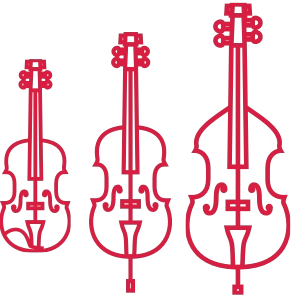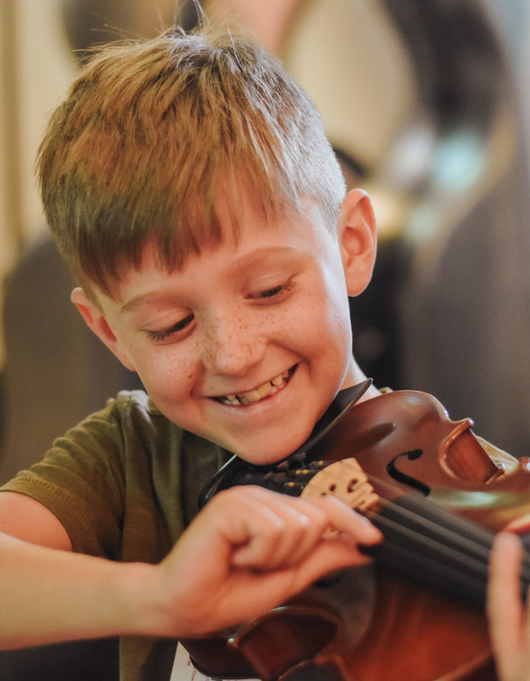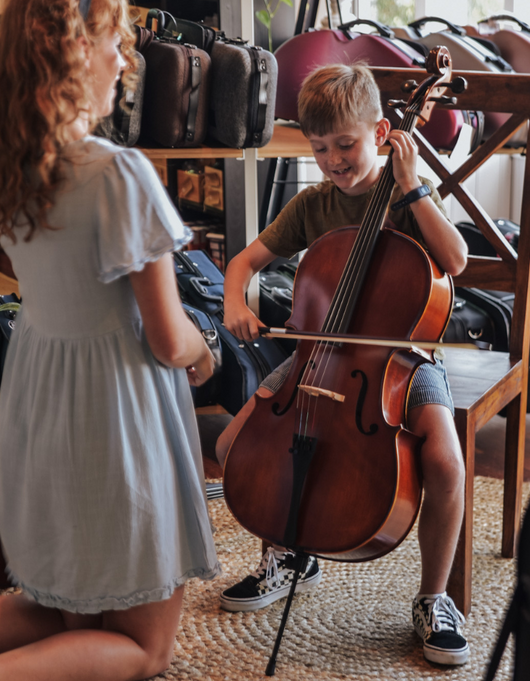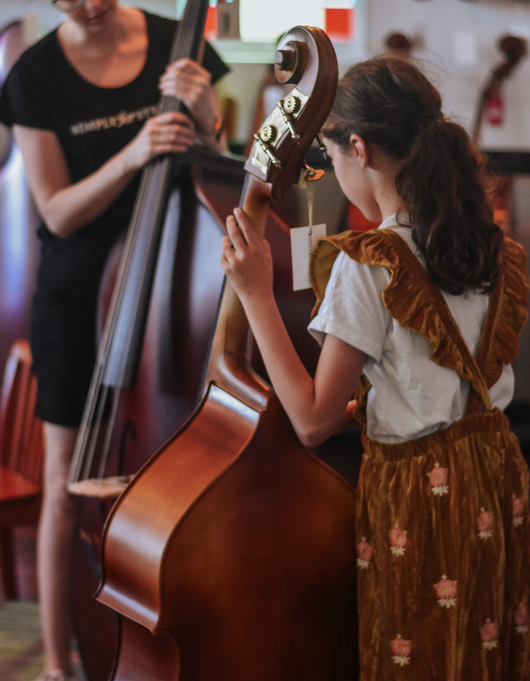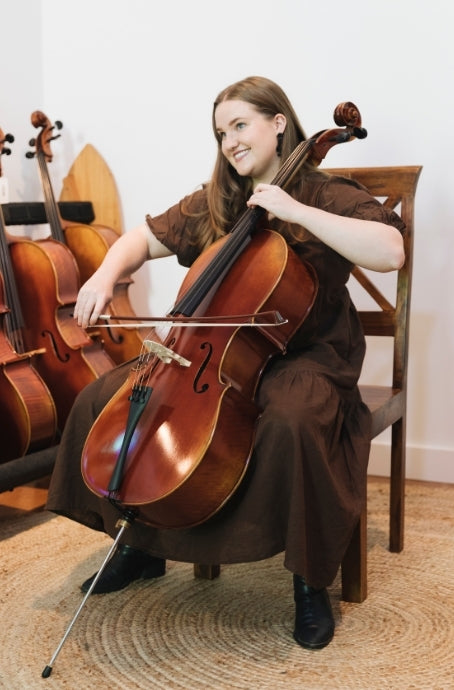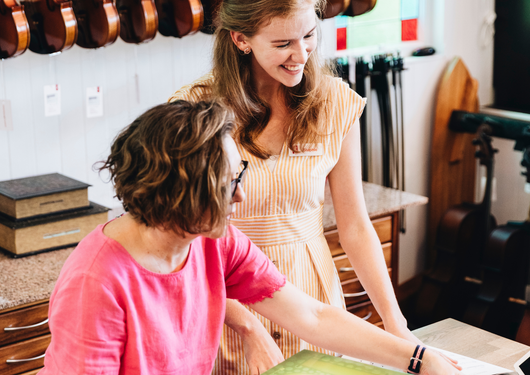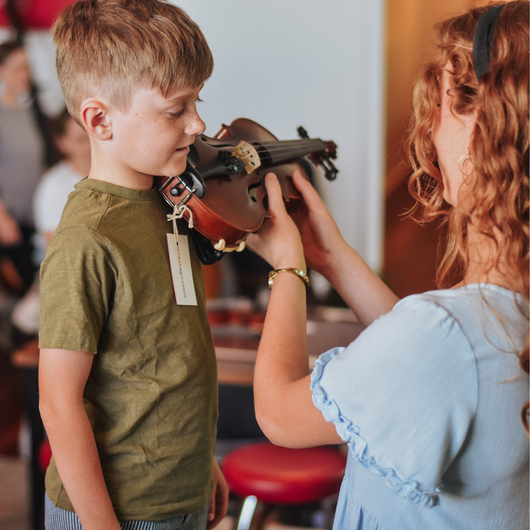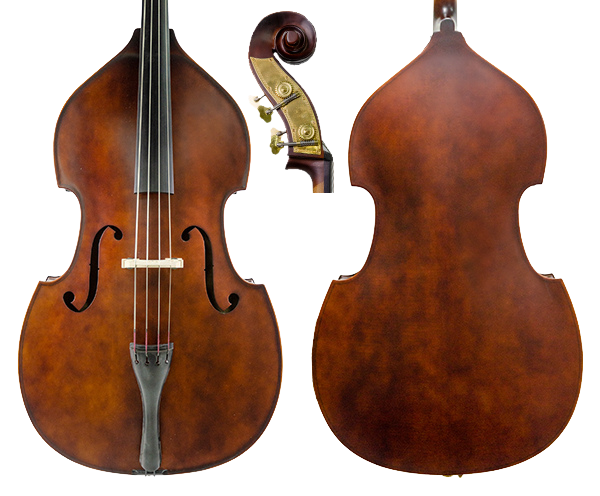
- We asked: is the instrument better for ensemble playing or best for solo performance?
- We took turns playing and listening to decide whether the instrument was more well-suited to blending with others, or if it is more likely to stand out.
- Some instruments may sound sweet under your ear, but can get “lost” from an audience’s perspective.
- These may work better for fitting into an ensemble.
- The sound could be really attractive, but rather introverted.
- When we play in larger groups it’s about the overall sound.
- Individual instruments don’t need to stand out: have you ever listened to a choir where somebody’s voice cuts through and dominates unpleasantly?
- Others might sound less pleasant under your ear, but the sound carries clearly to your listeners.
- These can lend themselves best to solo performance or playing in a trio/quartet situation where you really need to be able to make yourself heard more distinctly.
- We might say these are more extroverted.
- Bassy character or treble (ie, deeper or brighter tone)
- Sometimes we say an instrument is “warmer” (more bass) or brighter (more treble).
- It may be a violin that sounds almost “viola-ish” so we lean more towards “bass” on the scale.
- A cello could be very bright and not as ‘boomy’ or big sounding on the lower strings, so we count it as more “treble” in character.
- The standard Stradivari pattern gives the most characteristic violin/viola/cello family sound.
- It’s quite bright and speaks out well as an instrument designed to dominate the room.
- We asked if an instrument had more complex tones or if it was more outspoken and direct.
- Some instruments will have a real richness in the overtones, giving a great sense of interest when we try them.
- They probably will be slightly more introspective as well, but we can find this “depth” even in a solo instrument.
- A good example of this is found in the Guarneri violin design, which offers a rich and intriguing character, yet we find lends itself well to solo performance.
- The Stradivari pattern has a great blend of beautiful tone and brightness. It is brighter and clearer than the other popular designs.
- With every model we judged the instrument itself, not comparing it to any other instrument or price range.
- Therefore, a $300 violin is assessed via our 3 categories based on its own voice and not compared with say, a $3000 violin.
- It is our hope that our Sound Profile can help you find the type of voice you’re seeking, whether the instrument range is beginner, intermediate or beyond.
- Our advice if you’re searching on our website is to filter by your preferred price range / performance level and select those instruments that suit the general character you desire.
- This should reduce the wide number of options, helping narrow selection down to two or three instruments, making your trial process less complicated and less stressful!

Measure in centimeters from the neck to the middle of the palm.

Directions for Measuring: With the player’s arm fully extended and parallel to the floor, measure in centimetres from the neck to the middle of the palm.
| SIZE OF VIOLIN | MEASUREMENT (CM) | AVERAGE AGE OF CHILD |
|---|---|---|
| 1/16 | 35 - 38 CM | 3 - 4 YRS |
| 1/10 | 39 - 42 CM | 4 - 5 YRS |
| 1/8 | 43 - 46 CM | 5 - 6 YRS |
| 1/4 | 47 - 51 CM | 6 -7 YRS |
| 1/2 | 52 - 56 CM | 7 - 8 YRS |
| 3/4 | 57 - 60 CM | 9 - 11 YRS |
| 4/4 | > 60 CM | 11 - 13+ YRS |
Directions for Measuring: With the player’s arm fully extended and parallel to the floor, measure in centimetres from the neck to the middle of the palm.
| SIZE OF VIOLA | MEASUREMENT (CM) |
|---|---|
| 12" | 53 - 55 CM |
| 13" | 55 - 59 CM |
| 14" | 59 - 63 CM |
| 15" | 63 - 65 CM |
| 15" 1/2 | 65 - 67 CM |
| 16" | >67 CM |
Directions for Measuring: Sizing cellos is slightly more complicated than sizing violins and violas. The student should be seated at the edge of a chair such that the knees are bent at a ninety-degree angle (feet flat on the floor). The upper edge (back of cello near where the neck joins the body) of the instrument should rest in the centre of the chest (on the sternum) and the C peg should be slightly behind the left ear. The knees should lightly grip the lower bouts ensuring that the corners do not dig into the side of legs. (Corners should be slightly above the inside of the knees). The student should be able to reach both ends of the fingerboard with ease. The chart below shows approximate sizing by age.
Note: 7/8 size cellos are available as well. This can be a useful transitional size or a more comfortable option for those players who prefer a slightly smaller instrument.
| SIZE OF CELLO | AGE OF CHILD |
|---|---|
| 1/10 | 4 - 5 YRS |
| 1/8 | 5 - 6 YRS |
| 1/4 | 6 - 8 YRS |
| 1/2 | 8 - 10 YRS |
| 3/4 | 10 - 12 YRS |
| 4/4 | 12 - 13+ YRS |
Directions for Measuring: The 3/4 size double bass is the standard size for adults. 7/8 size basses and 4/4 sizes basses are made but they are less commonly used.
As a rough guideline, when both the bass and the player are standing upright, the bridge should be approximately at the same height as the large knuckles of the student's right hand. The most important issue is that the instrument is comfortable and that the student can reach the higher registers of the fingerboard without difficulty.
The chart below shows approximate sizing by age.
| SIZE OF BASS | AGE OF CHILD |
|---|---|
| 1/16 | 3 - 4 YRS |
| 1/10 | 4 - 5 YRS |
| 1/8 | 5 - 7 YRS |
| 1/4 | 7 - 9 YRS |
| 1/2 | 9 - 13 YRS |
| 3/4 | 13+ YRS |


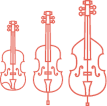


Sound Profile
Find your sound! Quickly identify the different tonal characteristics of each instrument brand and model. Our Sound Profile can help you find the type of voice you’re seeking, whether the instrument range is beginner, intermediate or beyond. We gathered six string players and teachers to blindly listen to each instrument and develop our unique and comprehensive Sound Profile. Learn More about Sound Profiles.
| Top: | Plywood - aiding in durability and affordability |
| Back & Sides: | Plywood - aiding in durability and affordability |
| Neck: | Solid Maple |
| Purfling: | Hand-applied |
| Machines: | Two gold on a plate machines |
| Fingerboard: | Ebony |
| Tailpiece: | Hardwood |
| Endpin: | Metal with height-adjustable screw |
| Bridge: | Seasoned maple - hand-carved and fitted |
| Strings: | Student steel-core |
| Grade: | Beginner students |
| Varnish: | Light brown finish |
| Outfit: | Yes - comes with a lightweight padded bag |
| Inclusions: | Student Brazilwood bow with ebony frog and horsehair. Choice of French or German. |
| Country of Origin: | Handmade in China. Finished & Set Up in Australia. |
At Simply for Strings, our luthiers and staff ensure that each instrument is individually assembled, setup, tuned, and inspected to our highest standards. Your instrument will be ready to play when you receive it—not sent to you unstrung or in pieces as sold by other online suppliers.
OUR SET UP INCLUDES:
- Shaping and re-surfacing the fingerboard
- Carving and fitting the bridge to the instrument
- Carving the nut to professional curvature
- Fitting pegs
- Polishing the finish
- Installing strings and tuning the instrument
- Fitting and adjusting the sound post
- Fitting and adjusting the tailpiece
- Inspecting and pre-rosining the bow
SHIPPING
- We work hard on processing and delivering your order as quickly as we can! We’re pleased to offer free standard shipping on all orders over $99* Australia wide.
- We aim for all of our parcels to have a safe delivery and we keep you updated every step of the way.
- All of our orders are packed in 100% eco-friendly packaging.
- Every single order is checked and packed by professional musicians who understand the nuances of every product we sell.
- Express shipping and click & collect services available. For more information on Shipping & Returns, please click here.
RETURNS
- Happiness guaranteed, no-nonsense returns.
- 30 days to change your mind! 3 easy steps to request a return through our portal. Just let us know what items you want to return, print a return label and pack your items.
- Easy exchanges available to help you find the product that’s perfect for you.
- Simply for Strings acknowledges and upholds all guidelines and terms under The Australian Consumer Law (ACCC). For more information on Shipping & Returns, please click here.

Packaged with Care
Trust us! We ship more instruments than anyone else in Australia.
Any unlikely damages during shipping are covered by us. Delivery day is special when you receive a Simply for Strings parcel. All of our orders are packed by our team of musicians in 100% eco-friendly packaging. Investing in an instrument is a big deal - our instruments are carefully bubble wrapped and packed in custom boxes to minimise movement during transit. If anything is damaged upon arrival, we’ll sort it in a jiffy! Whether you're ordering a new set of strings or a delicate musical instrument, every single order is packaged and sent with care. READ MORE
Why Simply for Strings
![usp]() Personalised Service
Ask us anything, there isn’t a question too big or too small!. We’re there for every step of your musical journey. Chat to us any time.
Personalised Service
Ask us anything, there isn’t a question too big or too small!. We’re there for every step of your musical journey. Chat to us any time.
![usp]() Huge Range
We have a huge range of internationally recognised brands and new arrivals landing every week. We don’t sell duds.
Huge Range
We have a huge range of internationally recognised brands and new arrivals landing every week. We don’t sell duds.
![usp]() Free Shipping
We love Australia! There are talented musicians right across the country. You get Free Shipping when you spend over $99* with Simply for Strings.
Free Shipping
We love Australia! There are talented musicians right across the country. You get Free Shipping when you spend over $99* with Simply for Strings.
![usp]() Professional Set Up
Simply for Strings’ dedicated workshop team deliver a high quality setup on each individual instrument, making them a delight to play.
Professional Set Up
Simply for Strings’ dedicated workshop team deliver a high quality setup on each individual instrument, making them a delight to play.

